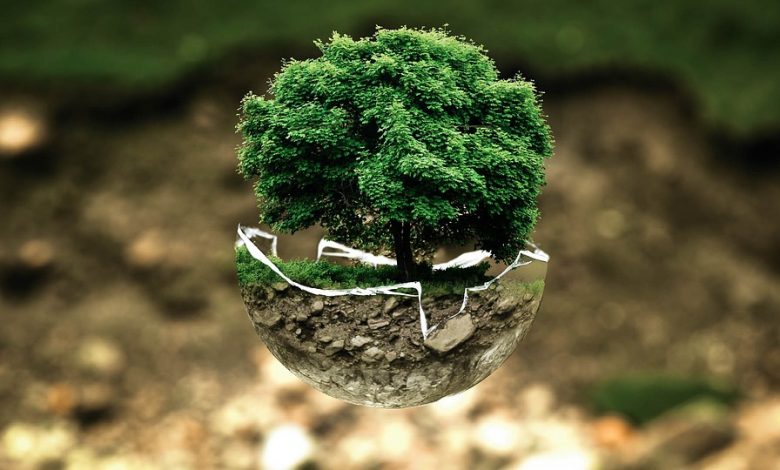

by Joachim Ng
The reappointment of Datuk Seri Saarani Mohamad as Menteri Besar will propel the State forward to a leading position in the federation, as he is less interested in partisan politics and more keen on advancing the welfare of all residents in Perak through inclusive governance. Without doubt, the economy will improve to everyone’s satisfaction.
However, one area of major concern that requires bigger attention from Saarani is protection of the environment. In both the Pakatan Harapan and Barisan Nasional manifestos, the environment came across as just one out of 10 or 11 priorities and was not even listed as among the top concerns.
In their response to climate change, Malaysian politicians are visibly and tamely following the crowd. A major survey on the priorities of Malaysian voters conducted before the general elections showed that only 20% of the population regarded climate change and the environment as an issue of concern.
The passivity of Malaysians, especially the youth, towards floods and firestorms contrasts greatly with the leading roles played by Greta Thunberg and thousands of other teenagers in Europe who have surged to the forefront of climate change action. Mere 19-year-olds have addressed international forums accusing nations of failing to pay sufficient attention to climate issues.
They know it is a life-and-death matter because the economy depends on the ecology. If the ecology breaks, the economy is shattered. So you can’t have lasting economic development without protecting the environment at the same time. During a short stretch before and after polling day on November 19, the total number of flood evacuees in Perak was recorded at 866 families.
Despite this, the logic behind the need to integrate economy and ecology escapes younger Malaysians. It is largely because they have stopped reading world news and what little reading is done is confined to WhatsApp, TikTok and Twitter. Free of volcanoes, our good fortune has led most people to assume that climate change will not sear our country. But like a heart attack, when it strikes it means your number is up.
It has been a catastrophic 2022 for South Asia — a harbinger of things probably coming our way. The subcontinent, on the other side of the Bay of Bengal, has been devastated. Pakistan lurched from record heatwaves in May to an unprecedented deluge in August, wiping out crops. Temperatures in the shade hit 51 degrees C in May, and three months later one-third of the country was submerged under water.
The double disaster caused economic damage that affected 33 million people, dragging more people into poverty to swell the already busting ranks. Pakistan’s neighbour, India, saw temperatures in New Delhi hitting 49.3 degrees C as the deadliest heatwave in the country’s history scorched the land in June. Andhra Pradesh in the south wilted as temperatures reached 52.1 degrees.
Extreme heat is melting the Himalayan glaciers bringing increased flooding, threatening water supply to fields, and lowering agricultural yields. Torrents of water are pouring down into valleys, destroying fields and houses.
There are some early warning signs that these twins — drought and deluge bringing death — are coming to visit Southeast Asia. Glaciers on a mountain range in Papua, Indonesia have already shrunk from 20 sq km to half a sq km and may disappear by 2030. Sea waters in and around Singapore are rising, and Pasir Panjang beach on Penang island has shrunk with high tide crashing up to wash away sand and expose rocks buried below.
Pasir Panjang is just one of more than 30 beaches in the peninsula that have suffered critical erosion. Kuala Kurau in Perak is at critical level. Almost all of the peninsula’s 3,772 km of shoreline comprise easily eroded alluvium, and some 10% of it has already been eroded by the sea. In the future, there will be no more beach picnics and no more sand castles to build.
Sea-level rise is partly due to melting glaciers and a third of them around the globe will disappear by 2050 including famed tourist destinations such as the Dolomites in Italy, the Yosemite and Yellowstone in the United States, and Mount Kilimanjaro in Kenya. These melting glaciers pour some 58 billion tonnes of ice every year into the seas. Swiss glaciers have lost 62% of their volume.
Glaciers in Iceland have lost 250 cubic km of ice. One of its most visited glaciers, Solheimajokull, receded 110 metres last year putting it among the country’s top three glacier shrinkages.
But the main cause of rising sea levels is the melting of ice sheets in the North Pole. The area of sea ice in the Arctic has shrunk by more than half and its volume has fallen by three-quarters. As the thickness of ice has declined by 65%, it is probably unsafe to do ice skating there any more.
The thinning of Greenland’s massive ice sheet is stretching 300 km inland from the coastline. The Greenland ice sheet, covering 1.8 million sq km, is 2 km thick and contains enough frozen water to lift global seas by over 7 metres if it all melts. This is higher than a double-storey house. However, the world’s biggest ice sheet is in Antarctica and if it melts down, make a run for Noah’s Ark.
What can you do to prevent that day from happening? The most important action is to spread eco-consciousness. Think ecology and talk ecology whenever you have lunch or dinner with a group, whether at home or in a restaurant. In the office, think about how to combine the economy with ecology. Remember that every transformation begins with the mind. And when minds are linked together, you have a Master Mind.
========================================
Disclaimer: The views and opinions expressed in this article are those of the author and do not necessarily reflect the official policy or position of Ipoh Echo


